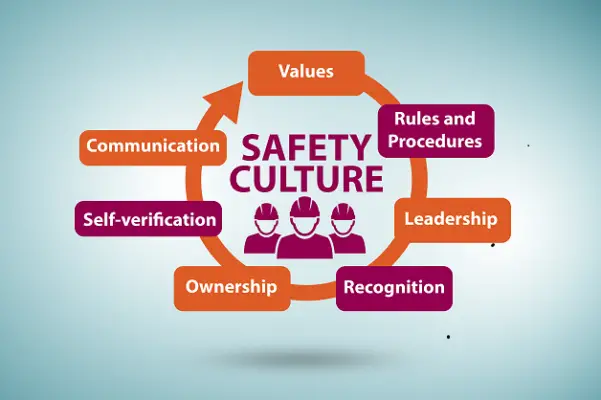Begin a risk assessment journey to guarantee a secure work environment. Identify hazards, assess risk, evaluate risks, and implement control measures.
This process aims to enhance safety and compliance with standards. Utilize various risk assessment tools, matrices, quantitative and qualitative analyses, and prioritize risks effectively.
Steps include hazard identification, risk evaluation, control measure selection, recording findings, and continuous review.
Qualitative risk analysis and quantitative risk analysis methods can be used in the risk management process to establish an integrated risk management framework that adheres to standards.
Methods like using guide words and checklists aid hazard identification. Techniques involve workplace surveys, exposure level evaluations, and decision-making on control measures. Document and share findings for effective risk control.

Prioritize control measure selection based on feasibility, cost-effectiveness, and operational impact.
Record findings systematically, prioritizing risks based on likelihood and significance for better risk mitigation.
Key Takeaways
- Understand potential hazards and evaluate risks.
- Implement control measures for a secure work environment.
- Prioritize risks based on likelihood and impact.
- Use risk assessment matrix for effective risk evaluation.
- Continuously review and improve safety protocols.
Understanding risk assessment process
Understanding the risk assessment process is essential for organizations to guarantee the safety and well-being of their employees.
It involves identifying potential hazards, evaluating risks, and implementing control measures to mitigate those risks effectively. We have various risk assessment templates that can be used for the activity.
The goal of risk assessments is to create a secure work environment by continuously improving safety protocols and maintaining high standards of health and safety compliance.
Understanding Risk Assessment
The systematic process of risk assessment plays an important role in identifying, analyzing, and controlling hazards and risks within a workplace to uphold the well-being of employees and customers.
In the context of health and safety, understanding risk assessment involves the careful consideration of various factors to maintain a safe working environment.
This process entails the identification of hazards, evaluation of risks, implementation of controls, and prioritization of actions to mitigate potential dangers.
Continuous improvement is key to refining and enhancing risk management strategies over time. Below is a table summarizing key aspects of risk assessment:
Key TermsDescriptionHazardsPotential sources of harmRisksLikelihood and impact of harmControlsMeasures to reduce risksWorkplaceEnvironment where work occurs
Understanding these elements is essential for effective risk management and regulatory compliance.
Why is it Important?
A thorough risk assessment process is essential for maintaining a safe and compliant work environment by systematically identifying, analyzing, and controlling potential hazards and risks.
Risk assessment plays a pivotal role in ensuring health and safety standards are met, aligning with occupational safety regulations such as OSHA and the Health and Safety at Work Act.
The Environmental Protection Agency (EPA) underscores the importance of risk assessment in safeguarding humans and the environment.
By conducting risk assessments, organizations can enhance risk management practices, decrease operational risks, bolster safety performance, and advance their overall objectives.
The process of assessing risk often involves key elements such as risk identification, analysis, evaluation, and communication, aiding in addressing both threats and opportunities methodically.
Why Is Risk Important in Safety?
Effectively managing risk in safety is paramount for maintaining a secure work environment and meeting regulatory standards.
Operational safety hinges on recognizing the significance of risk in maintaining health and safety standards. To underscore the importance of risk in safety, consider the following points:
- Identification of Hazards: Risk assessment allows for the identification of potential hazards that could jeopardize the well-being of individuals in the workplace.
- Implementation of Control Measures: By evaluating risks and implementing control measures, organizations can proactively reduce risks and enhance operational safety.
- Compliance with OSHA Regulations: Adhering to OSHA regulations through thorough risk assessments ensures legal compliance and fosters a culture of safety.
- Communication of Findings: Effectively communicating risk assessment findings is vital for making informed decisions and implementing necessary controls to mitigate risks efficiently.
The goal of risk assessments
Understanding the goal of risk assessments in the workplace is fundamental for ensuring the health and safety of employees and customers. Risk assessments aim to identify potential hazards, evaluate health and safety risks, and implement control measures to enhance overall safety.
By following a structured risk assessment process, including hazard identification, risk evaluation, and implementing control measures, organizations can proactively control risks in the work environment.
This proactive approach emphasizes the importance of continuously monitoring and updating control measures to maintain a safe and healthy work environment.
The ultimate objective of risk assessments is to eliminate or minimize risks based on their likelihood of injury severity and impact, contributing to the overall safety and well-being of individuals within the workplace.

Preparation for Risk Assessment
When preparing for a risk assessment, understanding how to use a risk assessment matrix is essential for evaluating and prioritizing risks effectively.
Additionally, conducting quantitative risk analysis, and qualitative analyses provides a thorough view of potential risks and their impact on the organization.
Examples of risk assessments conducted in various fields can offer valuable insights into best practices and methodologies for a successful risk assessment process.
How to use a risk assessment matrix
To facilitate the risk assessment process effectively, organizations can utilize a risk assessment matrix, a visual tool designed to evaluate and categorize risks based on the likelihood and severity of potential hazards.
- The risk assessment matrix is an essential component of the risk management process, aiding in quantitative risk assessment.
- It assists in hazard analysis by considering both the severity and likelihood of potential hazards.
- The matrix helps in prioritizing risks for the implementation of appropriate mitigation strategies.
- By assigning numerical values or using color coding, the risk assessment matrix offers a clear overview of risk levels, enabling informed decision-making.
Quantitative Analysis
Utilizing numerical data and analytical techniques, quantitative analysis plays a pivotal role in preparing for a thorough risk assessment process in the workplace.
This method focuses on measuring risks based on their likelihood and impact, allowing organizations to prioritize actions effectively.
By employing calculations, statistical methods, and risk modeling, quantitative analysis helps in quantifying risks accurately and understanding the potential consequences associated with identified hazards.
Additionally, it provides a numerical basis for decision-making regarding risk mitigation strategies.
Through the systematic application of quantitative and qualitative risk analysis together, organizations can enhance their risk assessment process by gaining a deeper understanding of risks and implementing proactive measures to guarantee a safe and secure work environment for all individuals involved.
Qualitative Analysis
Qualitative analysis is essential in the initial stages of preparing for a thorough risk assessment process in the workplace.
Understanding the nature of hazards and their characteristics is a key focus.
Descriptive information about risks is prioritized over numerical data.
Categorizing risks based on their impact, likelihood, and severity aids in risk evaluation.
Prioritizing risks for further assessment and control measures is facilitated through qualitative analysis.
Examples of risk assessments by field
Various industries require specific risk assessments tailored to their unique operational environments and challenges. Health and safety risk assessments focus on identifying hazards like electrical safety hazards, manual handling, and fire risks.
Workplace risk assessments evaluate risks related to work equipment, working conditions, and employee behaviors.
Fall risk assessments assess the risks associated with working at heights, ladders, scaffolds, and open edges.
Construction risk assessments identify risks in activities such as excavation, working with heavy machinery, and working at heights.
Quantitative Risk Assessment (QRA) is a specialized method used in industries like oil and gas, chemical, and nuclear to analyze risks comprehensively.
Each field necessitates a thorough risk assessment to safeguard the safety and well-being of individuals operating within these environments.
Steps in Risk Assessment Process
The risk assessment process involves several essential steps that are fundamental in ensuring workplace safety, health administration, and compliance.
These steps encompass methods for identifying hazards, techniques for evaluating risks, selection of appropriate control measures to conduct risk assessments, effective recording of findings, and a continuous review process.
Hazard Identification Methods
During the risk assessment process, hazard identification methods play an essential role in pinpointing potential sources of harm and risks in the workplace.
- Tangible and intangible sources, threats, opportunities, causes, consequences, vulnerabilities, and changes in context are considered during hazard identification.
- Factors like limitations of knowledge, biases, assumptions, and time-related elements are taken into account.
- Hazard identification studies (HAZID) use guidewords and checklists to identify potential hazards, causes, and consequences.
- The ISO 31000-2018 standard recommends analyzing uncertainties, events, scenarios, and controls for effective risk identification.
These methods aid in prioritizing hazards, ensuring a thorough approach to hazard identification within the risk assessment process.
Risk Assessment Techniques
Utilizing a systematic approach, risk assessment techniques play a vital role in identifying and evaluating hazards to guarantee workplace safety and mitigate risks effectively.
These techniques involve methods such as workplace surveys, manufacturer instructions, accident reports, and checklists to identify hazards.
Evaluating risks includes considering exposure levels, using a risk matrix, and specific tools for analysis. Decision-making on control measures, prioritized by hierarchy, is important for risk and mitigation strategy.
Documenting findings, maintaining records, and sharing assessments with relevant parties are essential steps.
Tools like risk matrices, decision trees, what-if analysis, and failure tree analysis enhance the effectiveness of risk assessment techniques, aiding in informed decision-making to enhance workplace safety.
Control Measure Selection
Effective control measure selection is a pivotal stage within the risk assessment process, essential for mitigating workplace hazards and enhancing overall safety standards. When selecting control measures, organizations should consider:
- Hierarchy of Controls: Prioritize controls such as engineering, administrative, and personal protective equipment following the hierarchy of controls.
- Feasibility: Evaluate the practicality and achievability of implementing the control measures.
- Cost-effectiveness: Assess the financial implications of each control measure to guarantee efficient resource allocation.
- Impact on Operations: Consider how the selected measures will affect daily operations while maintaining compliance with regulations to create a safe work environment.
Recording Findings Effectively
When documenting findings in the risk assessment process, it is essential to detail hazards and potential harm thoroughly to ensure a thorough evaluation of risks.
Identifying hazards and potential risks accurately is vital for creating an effective risk assessment plan.
Utilizing structured risk assessment template templates can streamline the recording of findings, ensuring important details are not overlooked.
It is important to prioritize risks based on their significance and likelihood or probability of occurrence.
By clearly outlining hazards in a risk assessment form, organizations can better understand the steps needed to mitigate potential risks elsewhere.
Effective risk assessment involves a detailed examination of both obvious hazards and potential risks to create a safer work environment.
Continuous Review Process
To maintain a high level of safety in the workplace, a continuous review process is essential within the integrated risk management and assessment framework. This process guarantees that risk management remains effective and up-to-date. Consider the following key points:
- Regularly assess the effectiveness of controls to adapt to changing circumstances.
- Promptly review existing controls when workplace changes occur.
- Take into account feedback from workers, accidents, or near misses for control improvements.
- Update the risk assessment record with any changes made to maintain accurate documentation.
Creating Risk Assessment Chart
In the process of managing risks in the workplace, a vital step involves creating a risk assessment chart to visually represent identified hazards, potential risks, and control measures.
This chart aids in prioritizing risks by considering their likelihood and impact, among other factors, facilitating effective risk management.
By incorporating color coding, risk severity levels, and action plans for mitigation, the chart enhances understanding and guides decision-making. Symbols or icons can further clarify different risk factors and control strategies.
Regularly updating the risk assessment chart is essential to guarantee its alignment with evolving workplace conditions and risk management strategies.
This iterative process of updating the chart allows organizations to adapt their mitigation strategies and maintain a proactive approach to risk management.

Importance of Continuous Review
Continuous review is a critical component of the risk assessment process as it guarantees that control measures are effective and up to date.
By regularly reviewing risk assessments and existing processes, organizations can identify any new hazards or risks that may emerge over time.
This ongoing evaluation allows for adjustments to be made promptly to address changing circumstances and maintain a proactive approach to risk management.
Review your assessment and update if necessary
Regularly reviewing and updating risk assessments is a critical component of effective risk management in the workplace. To guarantee the process is efficient and thorough, consider the following:
- Update your risk assessment: Regularly revisit and revise your risk assessments to reflect any changes in the work environment.
- Adapting controls: Modify control measures to address new or evolving risks identified during the review process.
- Identifying emerging risks: Continuous review helps in spotting emerging risks promptly and taking preventive measures to mitigate them.
- Workplace safety: Prioritize the safety of employees by promptly reviewing risk assessments and implementing necessary updates in response to significant changes.
Risk Assessment Training: Achieving a Culture of Safety
Achieving a culture of safety through risk assessment training hinges on the paramount importance of ongoing review and refinement. Continuous review sessions play a crucial role in instilling a safety-conscious mindset within organizations.
By regularly updating skills in identifying hazards, analyzing risks, and controlling risks, employees can stay proactive in mitigating potential dangers. Training sessions focus on enhancing hazard recognition and reinforcing safety protocols to have safety managers guarantee a safe work environment.
Implementing a culture of safety through continuous risk assessment training not only prevents incidents but also fosters a proactive approach to risk management. Prioritizing continuous review in risk assessment training is essential for organizations looking to effectively mitigate risks and maintain a high standard of health and safety.
Frequently Asked Questions
What Are the 5 Main Steps of a Risk Assessment?
The 5 main steps of a risk assessment involve planning, hazard identification, risk evaluation, control measures implementation, and documentation. These steps guarantee systematic risk management by the risk assessors identifying hazards, evaluating risks, implementing controls, and recording findings for a safe work environment.
What Is a Risk Assessment Guide?
A risk assessment guide is a systematic tool used to identify, analyze, and control hazards and risks in different settings. It aims to mitigate potential risks by evaluating their likelihood and impact, ensuring compliance with safety regulations and promoting a secure environment for all stakeholders.
What Are the Four 4 Main Elements in the Risk Assessment Process?
The four main elements in the risk assessment process are risk identification, risk analysis, risk evaluation, and risk communication. These four risk assessment steps involve recognizing hazards, evaluating risks, determining control measures, and effectively communicating risk information to stakeholders.
What Are the 4 Steps in Risk Assessment in Proper Order?
The 4 steps in the risk assessment process, in proper order, are risk identification, risk analysis, risk evaluation, and risk communication. This systematic approach helps organizations identify hazards, assess risks, determine control measures, and share information effectively.

Conclusion
The risk assessment process is an essential tool for maintaining workplace safety and preventing potential harm and financial loss.
By following the systematic steps outlined in this guide, organizations can proactively identify and mitigate risks, reduce risk and ultimately enhancing operational resilience and compliance.
Continuous review and refinement of control measures are vital for upholding the highest standards of safety in the workplace. Through diligent implementation of risk management practices, businesses can cultivate a culture of safety and guarantee the well-being of their employees.

Chris Ekai is a Risk Management expert with over 10 years of experience in the field. He has a Master’s(MSc) degree in Risk Management from University of Portsmouth and is a CPA and Finance professional. He currently works as a Content Manager at Risk Publishing, writing about Enterprise Risk Management, Business Continuity Management and Project Management.

